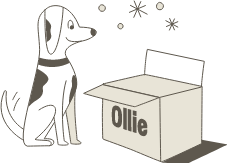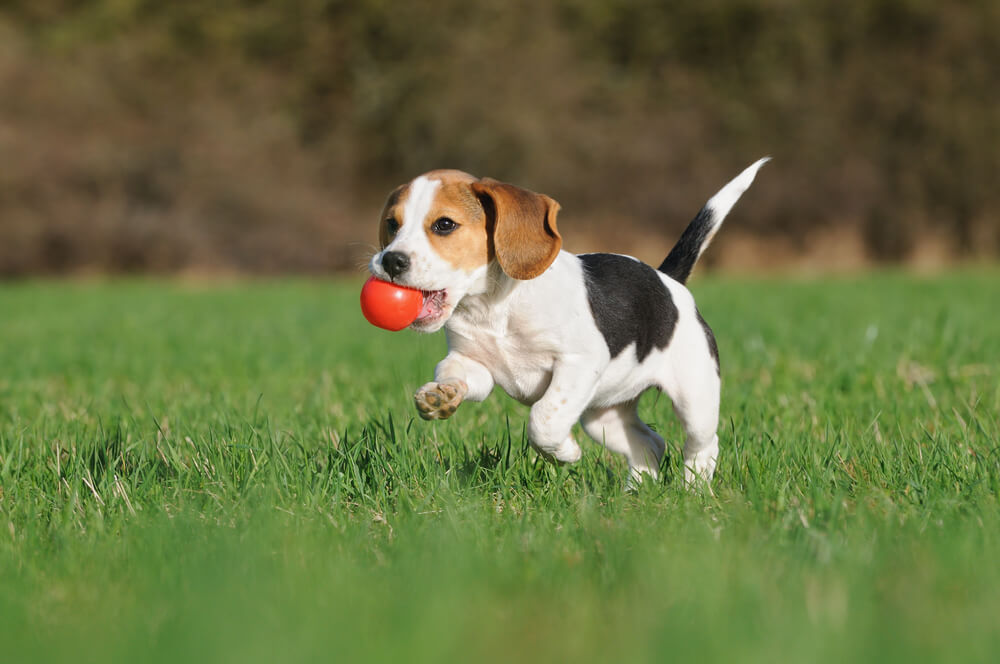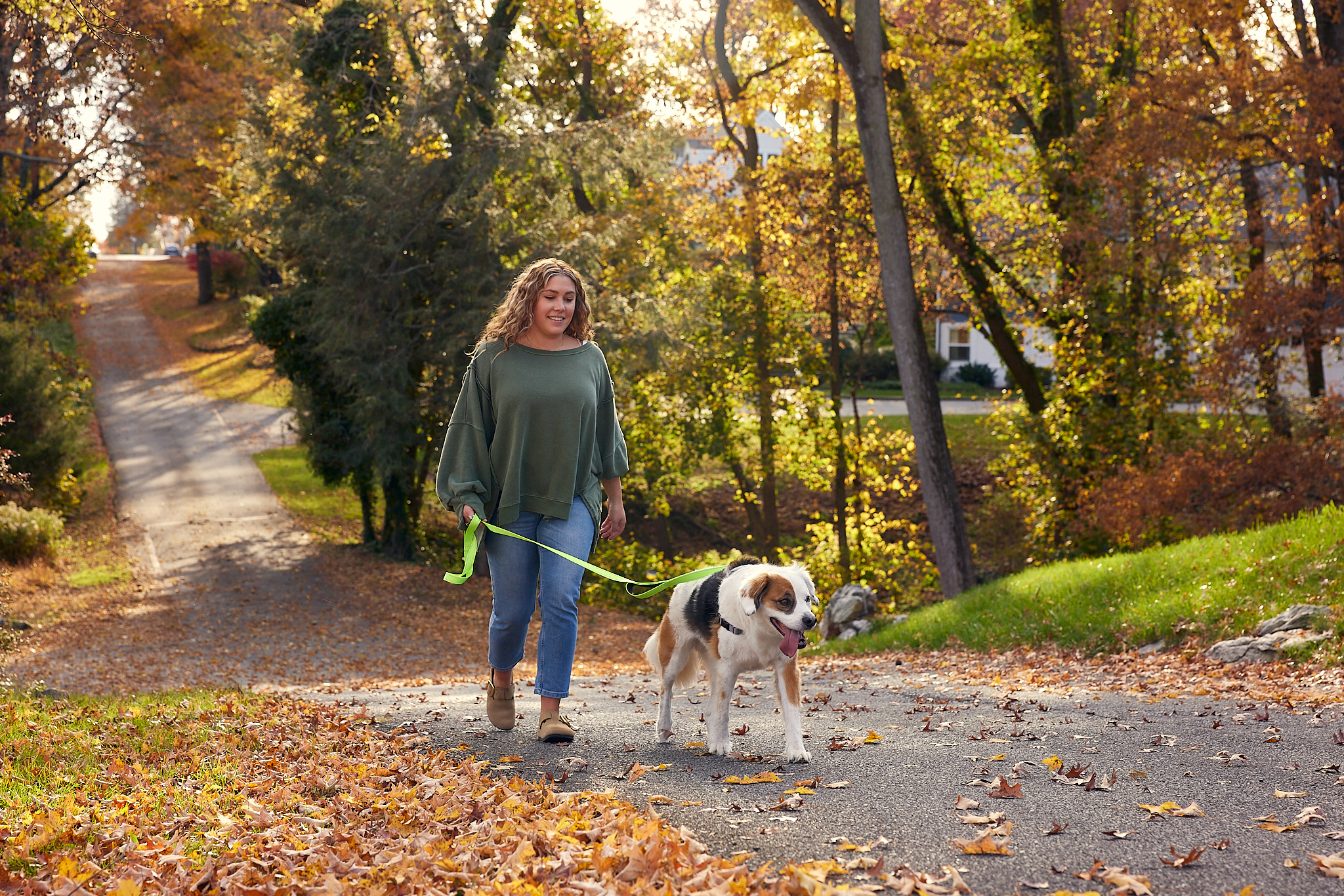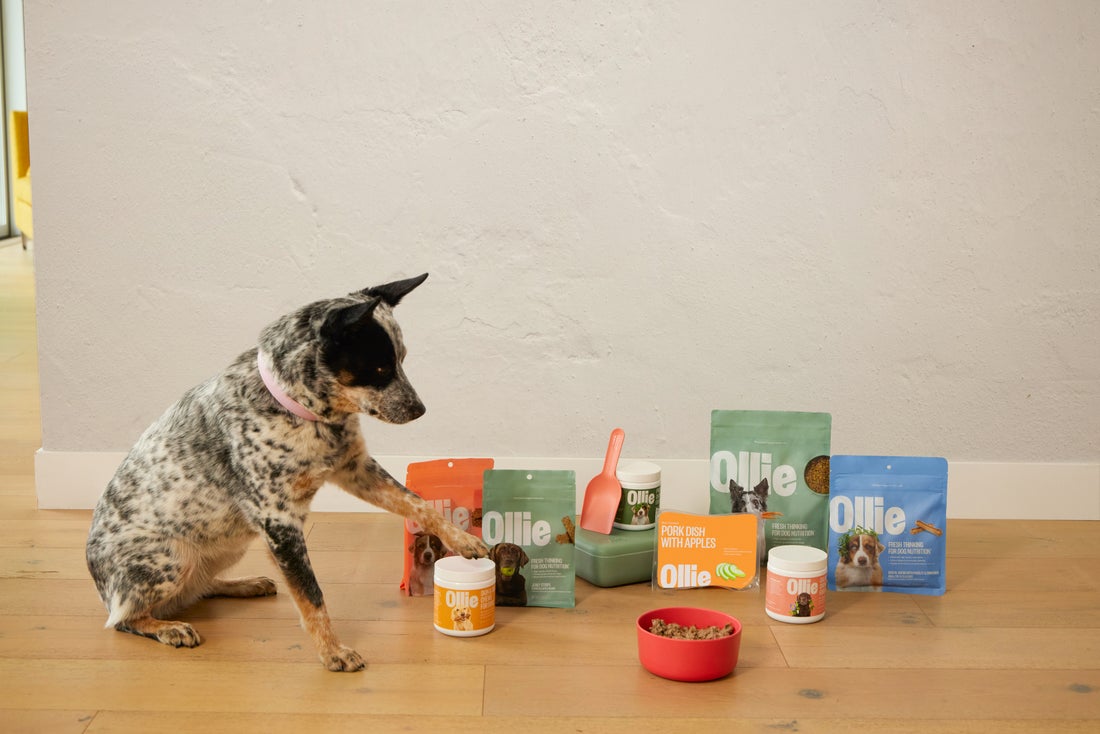Hey Ollie blog readers! We’re offering you an exclusive 60% OFF your starter box! Try now!
A dog throwing up once in a while? That’s usually no big deal. Maybe they scarfed down grass at the park or got a little too excited over dinner. But if your dog keeps throwing up, or you’re waking up to another mess for the third day in a row, it’s time to take it seriously.
Frequent vomiting is more than just an inconvenience, it’s your dog’s body telling you something isn’t right. Maybe it’s a sensitive stomach. Maybe it’s food intolerance. Maybe it’s something deeper, like a chronic digestive issue or a reaction to low-quality ingredients in their diet.
“My dog keeps throwing up after eating” is one of the most common concerns vets hear. And while the reasons can range from harmless to serious, ignoring repeated vomiting is never a good idea.
In this guide, we’ll break down what could be behind your dog’s nausea, when it’s time to worry, and how to work with your vet to find a solution. We’ll also talk about how switching to a more digestible, stomach-friendly diet, like Ollie fresh meals, can help settle your dog’s stomach and reduce the risk of ongoing issues.
Vomiting vs. Regurgitation – What’s the Difference?
If you’re trying to figure out why your dog keeps vomiting, the first thing to do is make sure it’s actually vomiting, and not regurgitation. These two symptoms look similar but come from different parts of the body and mean different things.
Here’s how to tell them apart:
Vomiting (True Vomiting)
- Happens after food has reached the stomach
- Often includes heaving or gagging before the food comes up
- You might see yellow bile, partially digested food, or even grass
- Can happen hours after eating
- A sign of gastrointestinal irritation, infection, or deeper health issues
Regurgitation
- Happens suddenly and without warning
- Usually involves undigested food coming back up shortly after eating
- No retching or abdominal effort
- Can be related to esophageal issues or structural problems, not stomach upset
Understanding the difference helps your vet get to the root of the issue faster. If your dog vomits with force and shows signs of nausea (like lip licking, pacing, or drooling), it’s probably true vomiting. If food just seems to come back up without effort, you’re likely dealing with regurgitation.
Either way, chronic episodes aren’t something to brush off. Repeated vomiting or regurgitation can lead to dehydration, nutrient loss, and discomfort, especially if it’s happening daily.
Common Causes of Chronic Vomiting in Dogs
There’s no one-size-fits-all answer to why your dog keeps vomiting. Some causes are mild and easy to treat. Others may point to more serious health problems that need medical attention.
Here are some of the most common reasons for ongoing or repeated vomiting in dogs:
- Eating Something That Didn’t Sit Right
Dogs are curious eaters. Sometimes it’s grass, garbage, table scraps, or something they snuck on a walk. These “dietary indiscretions” can irritate the stomach lining, causing temporary vomiting.
In most cases, this clears up within a day. If your dog keeps throwing up after eating, especially their regular food, it could be a sign of a sensitivity or intolerance to something in their diet.
- Food Sensitivity or Allergy
Some dogs react poorly to common ingredients like beef, chicken, dairy, wheat, or artificial additives. These reactions can show up as vomiting, diarrhea, itchy skin, or ear infections.
If vomiting improves after switching to a limited-ingredient, gently cooked diet like Ollie, it may confirm that your dog’s old food was part of the problem.
- Infections or Parasites
Bacterial or viral infections, and parasites like roundworms or giardia, can irritate the digestive system. These often cause vomiting along with diarrhea, fatigue, and appetite loss.
- Inflammatory Bowel Disease (IBD)
Chronic inflammation in the stomach or intestines can lead to ongoing vomiting, weight loss, and inconsistent poop. IBD is often linked to food triggers or immune system dysfunction.
- Pancreatitis or Liver Issues
If your dog’s vomit looks greasy or has a foul odor, the pancreas or liver may be involved. Pancreatitis is painful and usually triggered by high-fat foods.
- Gastrointestinal Obstruction
Swallowed toys, bones, or other foreign objects can block the digestive tract. This often causes repeated vomiting, bloating, and obvious discomfort. This is a medical emergency.
- Other Underlying Diseases
Conditions like kidney disease, Addison’s disease, or even certain cancers can cause chronic vomiting as a secondary symptom.
Some causes are easy to fix with a diet change and better feeding habits. Others need quick intervention. Either way, the next step is figuring out when vomiting is just a phase, or something that needs urgent care.
Signs That Vomiting Is Serious
Every dog throws up once in a while, but chronic vomiting or vomiting paired with other symptoms can be a sign something more serious is going on. Knowing when to call your vet can make a big difference.
Here are some signs that your dog’s vomiting isn’t just a one-off:
1. Vomiting More Than Once in 24 Hours
A single episode may be nothing. But if your dog keeps throwing up multiple times in a day, or for more than one day in a row, it’s time to consult your vet.
2. Blood in the Vomit
Red streaks or dark coffee-ground-like spots can point to internal bleeding. This can happen with ulcers, infections, or severe irritation.
3. Yellow, Green, or Foamy Vomit
Small amounts of yellow bile can be normal on an empty stomach. But repeated episodes of yellow or greenish vomit could signal bile reflux, pancreatitis, or liver trouble.
4. Signs of Dehydration
Lethargy, dry gums, sunken eyes, and skin that doesn’t bounce back when pinched are signs your dog is losing more fluids than they’re taking in.
5. Loss of Appetite or Weight
Dogs that avoid food or start dropping weight are not digesting properly, or are dealing with pain, inflammation, or disease.
6. Discomfort, Whining, or Bloated Belly
A dog that seems uncomfortable lying down, arches their back, or whines when touched may be in pain. Combine this with vomiting and it could mean something serious like a blockage or pancreatitis.
If you’re seeing any of these warning signs, don’t wait. Your vet can help rule out the serious stuff and give you a clear path forward, whether it’s meds, diagnostics, or a better diet for sensitive stomachs.
How Do Vets Diagnose Chronic Vomiting?
If you’ve decided it’s time to get help for your dog’s vomiting, your vet will start by getting a clear picture of what’s going on. Be ready to answer questions like:
- When did the vomiting start?
- What does the vomit look like (color, contents)?
- How often is it happening?
- Has your dog’s appetite, energy, or poop changed?
These details help narrow down what might be causing the issue. From there, your vet may recommend a few diagnostic steps:
Physical Exam
Your vet will feel your dog’s belly for tenderness, swelling, or signs of pain. They’ll check hydration levels and listen to their heart and gut sounds.
Blood Tests
These help rule out issues like kidney disease, liver problems, or pancreatitis. They also check for infection or inflammation markers.
Stool Sample
A fecal test can detect parasites like giardia or worms, which often go unnoticed but can trigger vomiting and diarrhea.
Imaging (X-rays or Ultrasound)
If a foreign object or growth is suspected, your vet may use imaging to look for blockages or organ issues.
Food Trials
In cases of suspected food intolerance or IBD, your vet might suggest switching to a limited-ingredient, highly digestible diet to see if symptoms improve. This is often where Ollie fresh dog food comes in, made with real ingredients and no artificial junk, they’re a smart choice for dogs with sensitive stomachs.
Getting a diagnosis can feel overwhelming, but each test brings you closer to a solution. In many cases, the right food and simple supportive care can get your dog back on track.
Treatment Options for Dog Chronic Vomiting
Once your vet identifies the likely cause of your dog’s vomiting, the next step is treatment. Some dogs need medical support, others just need time, and often, a better diet makes all the difference.
Here are common treatment strategies your vet may recommend:
Diet Change
Switching to a bland or limited-ingredient diet is often the first step. The goal is to reduce inflammation and give the digestive system time to heal.
If food intolerance is part of the issue, your vet might suggest a highly digestible, real-ingredient diet like Ollie. Our gently cooked meals are made with whole animal proteins, gut-friendly vegetables, and no artificial additives, making them easier on sensitive stomachs.

Medications
Depending on the cause, your dog may be prescribed:
- Antiemetics (like Cerenia or metoclopramide) to control nausea
- Antacids or proton pump inhibitors to reduce stomach acid
- Antibiotics if a bacterial infection is present
- Steroids or immunosuppressants for inflammatory bowel issues
Supportive Care
For dogs that are dehydrated or struggling to eat, your vet may recommend:
- Subcutaneous or IV fluids
- Appetite stimulants
- Vitamin B12 injections (common in dogs with IBD)
Surgery or Specialized Treatment
If there’s a blockage, tumor, or structural issue, surgery might be needed. Chronic diseases like kidney or liver disease may require long-term care and regular monitoring.
No matter the treatment plan, consistency is key. Stick with your vet’s recommendations, and don’t make diet changes too quickly. If you’re using Ollie, we offer gentle transition plans to help dogs adjust without upsetting their stomachs.
At-Home Care for a Dog That Keeps Throwing Up
When your dog is recovering from chronic vomiting—or prone to flare-ups—there’s a lot you can do at home to help them feel better and avoid future episodes.
Here’s how to support your pup during recovery and beyond:
1. Offer Small, Frequent Meals
Large meals can overwhelm a sensitive stomach. Feed smaller portions throughout the day to reduce strain on the digestive system.
2. Stick to Bland, Gentle Foods
If your dog’s vomiting was recent, stick with a simple, bland diet (like boiled chicken and rice) for 1–2 days. Once symptoms ease, gradually transition to a complete, digestible meal plan like Ollie.
3. Prioritize Hydration
Vomiting can lead to dehydration quickly. Offer small amounts of water often, or ice cubes if your dog isn’t drinking. You can also use unseasoned bone broth to encourage fluid intake.
4. Create a Calm Environment
Stress and excitement can make digestive issues worse. Give your dog a quiet, cozy place to rest and avoid any intense play or exercise until they’re back to normal.
5. Track Symptoms
Write down when vomiting happens, what the vomit looks like, what your dog ate, and any other signs (like diarrhea or appetite changes). This info is incredibly helpful for your vet.
6. Avoid Treats, Scraps, and Sudden Food Changes
Even healthy-seeming snacks can be a trigger. Skip table scraps and avoid changing foods or treats until your dog’s stomach has fully settled.
Consistency, clean nutrition, and observation go a long way. And if you’re using Ollie, you already have an edge, our meals are gently cooked, made with simple ingredients, and easy for dogs with sensitive systems to digest.
Diet’s Role in Preventing and Managing Vomiting
If your dog keeps throwing up, the food in their bowl could be part of the problem, or the solution. Many chronic vomiting cases improve dramatically with the right diet.
Here’s how food affects vomiting, and why choosing the right kind can make a real difference:
1. Quality Ingredients Are Easier to Digest
Dogs process real, whole foods more easily than highly processed kibble. Animal proteins like turkey, beef, and lamb, when gently cooked, are far less likely to irritate the gut than meat meals or by-products.
Ollie recipes use premium, human-grade meat and fresh vegetables with no fillers or artificial preservatives. That means more nutrients absorbed, and less waste (or upset) to clean up.
2. Limited Ingredients Reduce Triggers
Dogs with food sensitivities often react to complex formulas loaded with multiple proteins, grains, and additives. A simple ingredient list makes it easier to isolate what works, and what doesn’t.
With Ollie, each recipe is clear and straightforward, making it ideal for dogs with sensitive stomachs or known food allergies.
3. Natural Fiber and Moisture Help Digestion
Fiber from ingredients like sweet potatoes or pumpkin supports healthy gut movement and firmer stools. Moisture-rich meals (like Ollie) also reduce the risk of dehydration and make digestion smoother overall.
4. Consistency Prevents Flare-Ups
Dogs thrive on routine, especially in their diet. Feeding the same high-quality food every day reduces the risk of stomach upsets linked to ingredient changes, overfeeding, or table scraps.
Vomiting can feel overwhelming. But food is often the easiest, and most powerful, tool you have to help your dog feel better. With real, fresh ingredients and no hidden irritants, Ollie gives sensitive dogs the nutrition they need without the drama.
FAQs About Dogs Who Keep Throwing Up
Is it normal for dogs to throw up occasionally?
Yes, occasional vomiting can be normal, especially if your dog ate too fast, chewed grass, or got into something minor. But if it happens frequently or comes with other symptoms (like lethargy or loss of appetite), it’s time to take a closer look.
What does it mean if my dog throws up yellow bile?
Yellow bile usually appears when a dog vomits on an empty stomach. It could mean mild acid reflux, but if it happens often, it may point to food intolerance or a deeper issue like pancreatitis or bile reflux.
Why does my dog keep throwing up after eating?
Throwing up right after meals can mean your dog is eating too fast, has a food sensitivity, or is dealing with acid buildup. It could also signal a more serious problem like a blockage. If it’s happening often, your vet can help narrow it down.
How long should I wait before seeing a vet for vomiting?
If your dog vomits more than once in 24 hours, seems tired, stops eating, or shows signs of pain or dehydration, don’t wait, call your vet. Repeated vomiting can quickly lead to complications.
Can changing my dog’s food help stop vomiting?
Absolutely. In fact, diet is one of the biggest factors in chronic vomiting. A highly digestible, whole-food meal, like Ollie, can ease stress on your dog’s digestive system and reduce the chance of irritation.
Tagged As:

The nutrition your dog needs,
the food they want.

Enjoying our articles? Subscribe our Newsletters and get new articles directly to your inbox
You might also like
31 July 2025
4 MINS READ
The Healthiest US States for Dogs
The Ollie Health team, a team of veterinarians and veterinary technicians, reviews thousands of photos submitted through Ollie’s Health Screening service. That’s hundreds of dogs (and their st…
by Ollie Pets
30 July 2025
3 MINS READ
The Poop Scoop: Your Dog Digestion Questions Answered
As pup parents, we spend a lot of time handling dog poop, and as a key indicator of a dog’s health, it’s only fitting that we think and talk about it just as much. Unfortunately, what happens …
18 July 2025
6 MINS READ
Can You Mix Fresh Dog Food With Kibble?
If you’re feeding your dog kibble but want to upgrade their bowl, you’re not alone. Many pet parents ask if they can mix fresh dog food with kibble to get some of the benefits of fresh food wi…
by Ollie Pets







